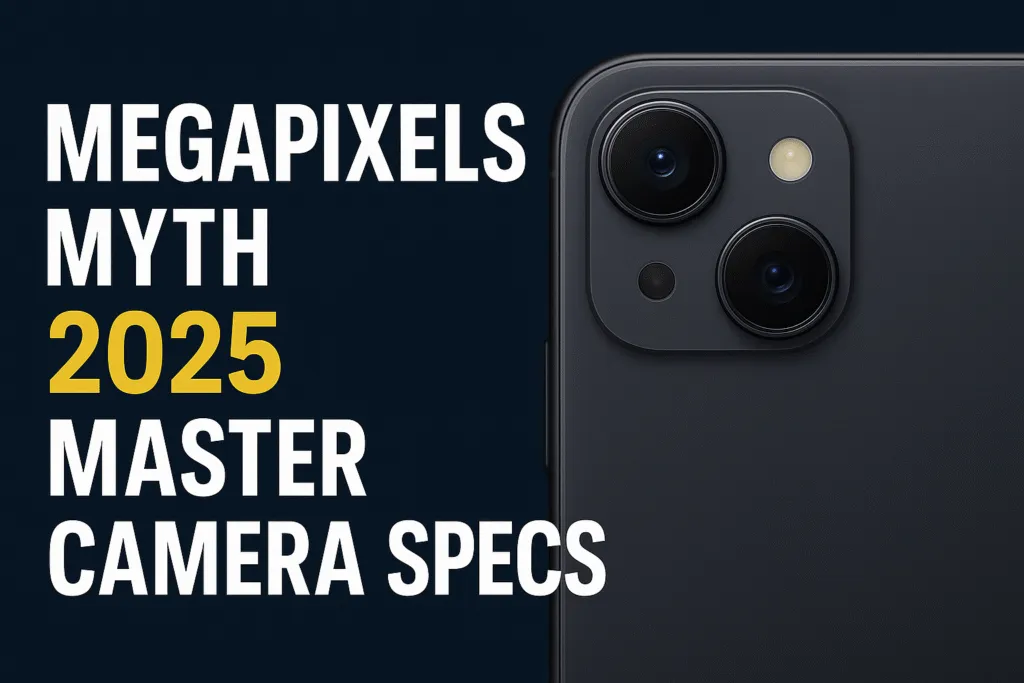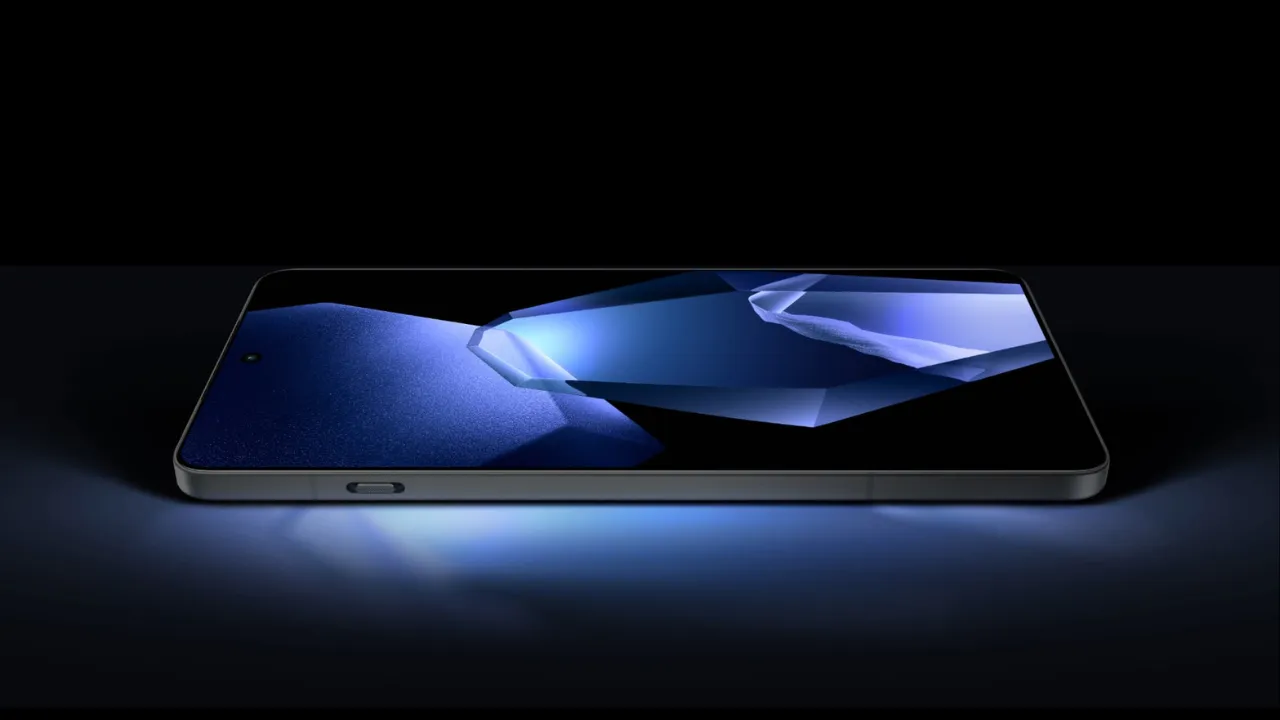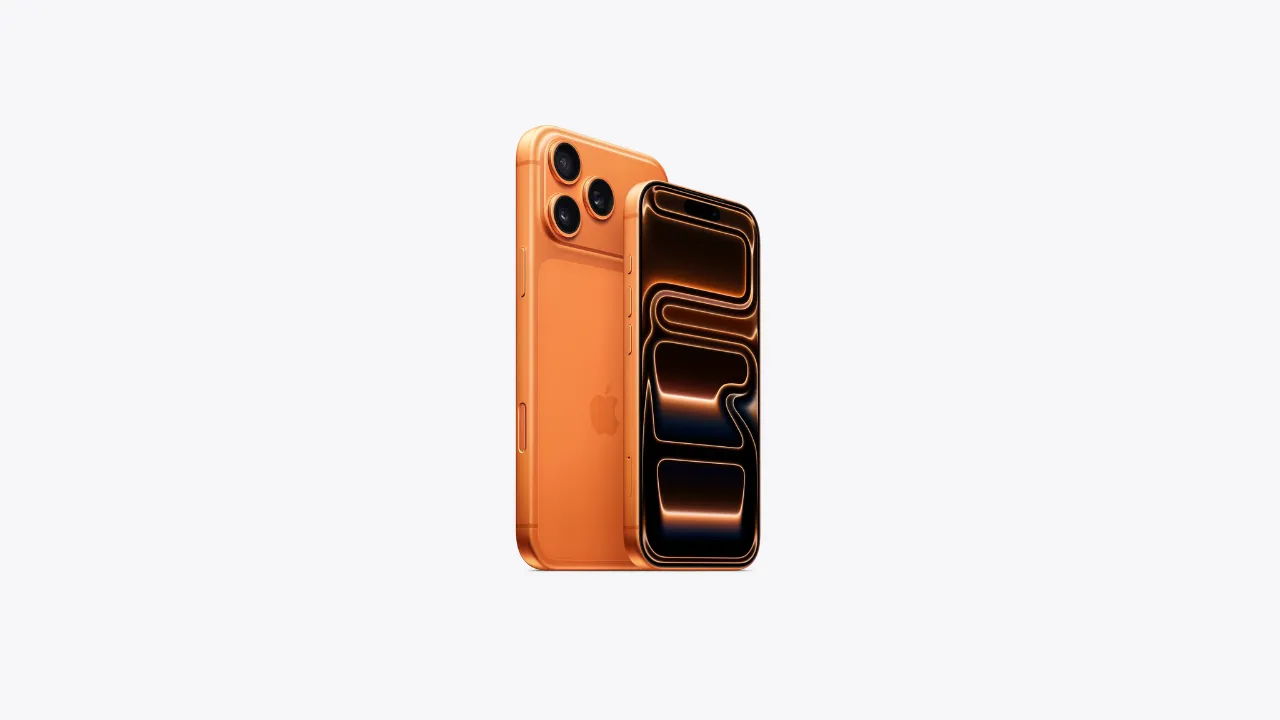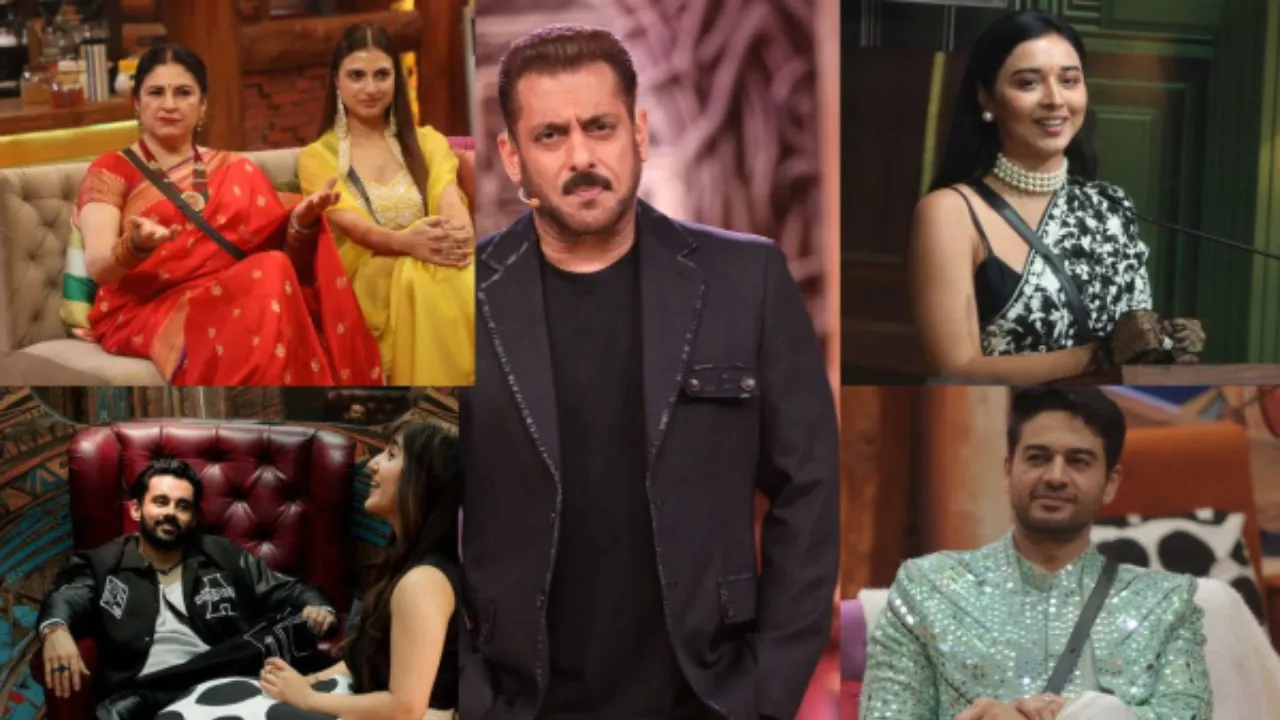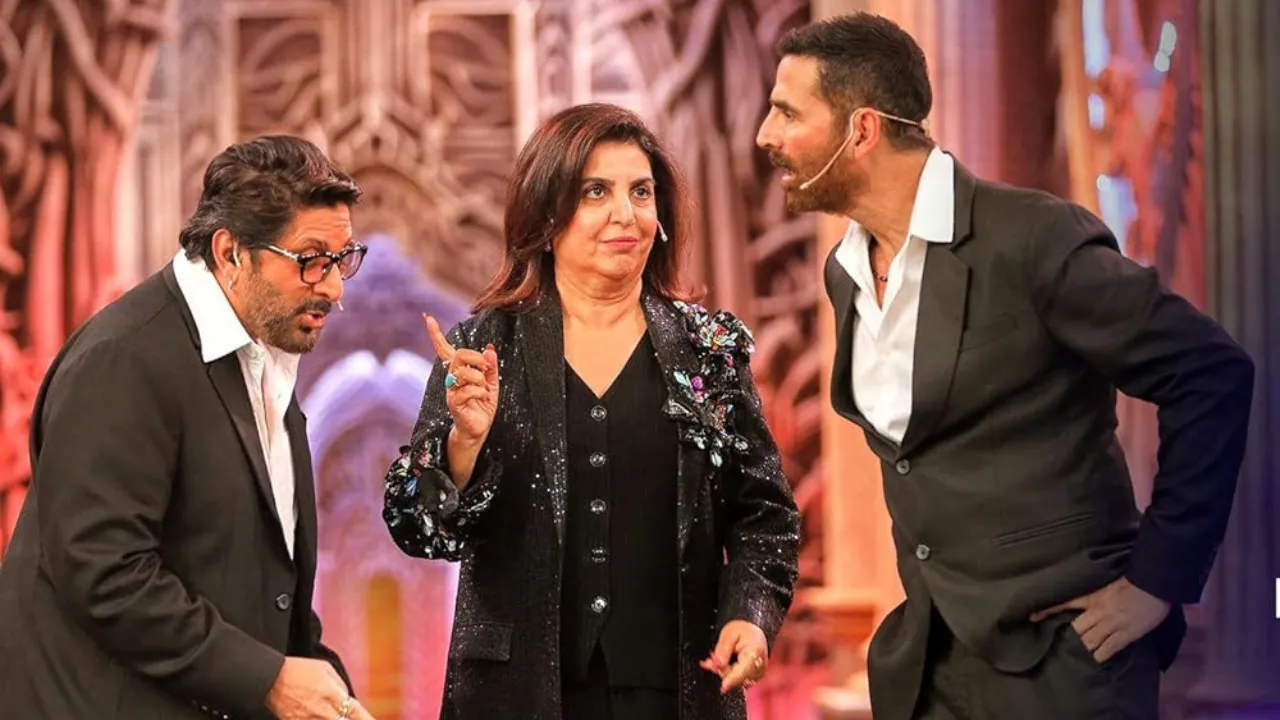Introduction: The Megapixel Obsession
In today’s smartphone-driven world, most people judge a camera by just one number—megapixels. Whether it’s a 48MP budget phone or a 200MP flagship, the assumption is simple: more megapixels must mean better photos. But if that were always true, every high-megapixel phone would outperform professional cameras, right?
The reality is very different. While megapixels do play a role, they are only a small part of the overall picture. Great photography depends on how well all the camera specs come together—things like sensor size, aperture, image processing, and lens quality. Even the lighting conditions and how the software handles colors and contrast matter more than most people realize.
That’s why you’ll often see a phone with just 12MP consistently outperform one with over 100MP. The secret? Balanced and optimized camera specs, not just a flashy number on the box.
As a tech blogger, I’ve seen countless people fall for the megapixel myth while completely ignoring the real features that impact photo quality. In this blog, we’ll break down what megapixels actually do, why they aren’t the only thing that matters, and which camera specifications you should really focus on when buying a phone or camera.
By the end, you’ll be able to look beyond marketing gimmicks and understand what makes a camera truly great. So before you let megapixels influence your next purchase, let’s dive deeper into the real world of camera specs and how they affect the photos you capture.
What Is a Megapixel?
The word “megapixel” gets thrown around a lot in camera marketing, but many people aren’t entirely sure what it actually means. Simply put, a megapixel equals one million pixels. Pixels are the tiny dots that make up a digital image, and the more pixels an image has, the more detail it can potentially capture.
For example, a 12MP camera captures images made up of roughly 12 million pixels. In theory, a higher number of pixels should mean sharper, clearer photos—especially when you zoom in or print them at large sizes. However, in real-world photography, things aren’t that straightforward.
Megapixels are just one part of the bigger picture when it comes to camera performance. If you’re comparing two cameras only by megapixel count, you’re missing out on the full story. Other camera specs like sensor size, lens quality, and image processing capabilities often play a much bigger role in the final result.
A higher megapixel count can be helpful for cropping or capturing fine detail, but if the sensor is small or the software isn’t well optimized, you might still end up with blurry or noisy photos. That’s why a 12MP camera with good overall specs can easily outperform a 64MP camera that lacks balance.
So, while megapixels are easy to understand and market, they shouldn’t be the only factor you look at. The best approach is to evaluate a camera based on how all its components work together. If you’re serious about photo quality, it’s time to start looking beyond just megapixels and pay attention to the complete set of camera specs.
Sure! Here’s the blog section for the heading “How Megapixels Are Calculated” written in a human tone, SEO-friendly, and naturally including the focus keyword camera specs (without any bold formatting):
How Megapixels Are Calculated
You’ve probably seen terms like 12MP, 64MP, or even 200MP on phone boxes and camera ads—but have you ever wondered how these megapixels are actually calculated? The answer lies in a simple mathematical formula based on resolution.
Megapixels are calculated by multiplying the number of horizontal pixels by the number of vertical pixels in a photo. For example, if a camera captures images at 4000 x 3000 resolution, that means it produces 12 million total pixels—equal to 12 megapixels.
Here’s the math:
4000 pixels (width) × 3000 pixels (height) = 12,000,000 pixels
12,000,000 pixels = 12 megapixels
It’s an easy calculation, but the number alone doesn’t tell you much about image quality. That’s why understanding the rest of the camera specs is so important. Two cameras might have the same megapixel count, but deliver very different results due to differences in sensor size, lens clarity, or software processing.
Some smartphone brands also use techniques like pixel binning, which combine multiple smaller pixels into one larger pixel to improve low-light performance. So a phone labeled as 48MP might actually capture photos at 12MP by default—but with better light sensitivity.
At the end of the day, megapixels represent resolution, not quality. They’re useful for large prints or cropping photos without losing detail, but they don’t guarantee better images. For that, you need to look beyond the numbers and understand the overall balance of camera specs that actually make a difference.
Does Higher Megapixel Always Mean Better Photos?
It’s easy to assume that more megapixels automatically mean better photo quality. After all, a 108MP camera sounds a lot more powerful than a 12MP one. But in reality, the story is much more complex. A higher megapixel count only tells you how many pixels are in the image—not how good that image actually looks.
A photo taken with a 64MP smartphone might look detailed on paper, but if the sensor is small or the lens isn’t high quality, the final image may still appear grainy, over-sharpened, or poorly lit. This is where understanding camera specs becomes essential. Great photography depends on a combination of factors—not just the number of pixels.
In fact, many professional DSLR and mirrorless cameras still use sensors with 20–24MP because they prioritize larger sensors, better light capture, and advanced processing over sheer resolution. A well-balanced 12MP camera with good sensor size, aperture, and image optimization can easily outperform a poorly tuned 108MP camera in real-world conditions.
Higher megapixels do have advantages, especially if you plan to crop your photos heavily or print them at large sizes. But for everyday use—like sharing photos on social media or viewing them on a phone screen—the difference is often negligible.
In short, higher megapixels can help, but they don’t guarantee better results. It’s the complete balance of camera specs—sensor quality, lens performance, software processing, and lighting—that truly determines how good your photos will look. So before choosing a device based solely on megapixel count, consider what’s happening behind the lens.
The Factors That Actually Affect Photo Quality
While megapixels are often used as a selling point, they’re just one part of a much bigger picture. What really determines the quality of your photos is the combination of several core camera specs working together. Things like sensor size, image processing, and lens quality have a much greater impact on how sharp, clear, and vibrant your images look.
Let’s break down the three most important elements you should pay attention to when evaluating photo quality.
Sensor Size
The camera sensor is the part that captures light and turns it into a digital image. A larger sensor can collect more light, which means better low-light performance, improved dynamic range, and less noise in your photos. This is why professional cameras usually have bigger sensors compared to smartphones.
Even among smartphones, the difference in sensor size can affect results significantly. A phone with a 12MP sensor that’s physically larger may produce much better images than a 64MP phone with a tiny sensor. So when reviewing camera specs, sensor size is something you should never overlook.
Image Processing Software
Today, software plays a massive role in photography—especially in smartphones. Once the sensor captures the image, the phone’s processor takes over to adjust colors, sharpness, exposure, and dynamic range. This is known as image processing.
Good image processing can turn an average photo into a great one. Brands like Apple, Google, and Samsung rely heavily on advanced software and AI algorithms to make photos look polished, even in difficult lighting conditions. So it’s not just about hardware—smart software is a key part of camera specs that truly matter.
Lens Quality
The lens is what guides light to the sensor, and its quality directly affects the clarity and detail in your shots. A good lens reduces distortion, improves sharpness, and helps produce natural-looking colors.
Low-quality lenses, even with high megapixels, can result in blurry or inconsistent images. That’s why professional cameras and high-end smartphones often use multiple precision-engineered lenses to ensure better performance.
In summary, the best photos come from a camera with balanced and optimized camera specs—not just a high megapixel count. Sensor size, software, and lens quality play the biggest roles in delivering photos that truly stand out.
Camera Sensor: The Brain Behind Every Shot
When it comes to photography, the camera sensor is arguably the most important component in the entire system. Often referred to as the “brain” of the camera, the sensor is responsible for capturing light and converting it into a digital image. No matter how high the megapixel count is, the size and quality of the sensor are what truly shape the final photo.
A bigger sensor allows more light to hit the image surface, which results in better detail, improved low-light performance, and greater control over depth of field. This is one of the most crucial camera specs that directly impact photo quality—especially in real-world conditions.
Let’s explore the two key concepts you need to understand when it comes to camera sensors.
Full Frame vs Crop Sensor
Full frame sensors are the largest commonly used sensors in consumer and professional cameras. They measure approximately the same size as a traditional 35mm film frame. These sensors provide superior image quality, excellent dynamic range, and better low-light performance.
On the other hand, crop sensors (also known as APS-C or Micro Four Thirds) are smaller in size. While they still produce good results, they often introduce a crop factor, which changes the effective field of view of the lens. This can be both a benefit or a limitation depending on your photography needs.
Understanding the difference helps you choose the right camera setup based on your goals—whether it’s casual photography, portraits, or professional work.
Sensor Size vs Resolution
Many people confuse sensor size with resolution, but they’re not the same. Resolution is measured in megapixels, while sensor size refers to the physical dimensions of the sensor.
A high-resolution sensor crammed into a small space may produce noisy, low-quality images—especially in low light. On the other hand, a moderate resolution sensor with a large surface area captures cleaner, richer images with better detail.
So, when evaluating camera specs, don’t just focus on megapixel numbers. Sensor size plays a much bigger role in determining the true quality of your photos. It’s the foundation that everything else in the camera system builds upon.
Aperture: The Key to Light and Background Blur
Aperture is one of the most important yet often misunderstood parts of a camera system. It controls how much light enters through the lens and hits the sensor. Along with shutter speed and ISO, aperture is a major factor in exposure—and it plays a big role in how your photos look, especially when it comes to brightness and background blur.
When you see f/1.8, f/2.4, or similar values in camera specs, you’re looking at the aperture rating. Understanding what those numbers mean can help you better choose a camera or smartphone that performs well in various lighting situations.
What Does f/1.8, f/2.4 Mean?
The “f” in these numbers stands for “f-stop,” which is a unit that measures the size of the lens opening. A lower f-number like f/1.8 means a wider aperture, allowing more light to enter the camera. A higher f-number like f/2.4 or f/3.5 means a narrower aperture, which lets in less light.
A wider aperture (smaller f-number) helps in low light conditions and creates a shallow depth of field—perfect for portraits with blurred backgrounds. A narrower aperture (larger f-number) gives you more depth of field, keeping more of the image in focus.
Impact on Low Light and Bokeh
One of the biggest benefits of a wide aperture is its performance in low light. Cameras with f/1.8 or wider apertures can capture brighter images without needing flash or higher ISO, which helps reduce grain or noise.
Wide apertures also produce beautiful bokeh, the soft blur effect you see in the background of portrait shots. This effect makes subjects stand out and gives your images a professional, cinematic look.
When comparing camera specs, aperture should never be ignored. It affects both the technical and artistic quality of your photos—especially in low light and portrait scenarios. This in-depth guide breaks down ISO, aperture, and shutter speed.
Focus Systems Explained
Focus is one of the most critical aspects of any photo. A perfectly lit and well-composed image can still look poor if the focus is off. Whether you’re using a smartphone or a professional DSLR, the camera’s focus system plays a huge role in how sharp and clear your subject appears.
Focus systems are often buried deep within camera specs, but understanding them can help you make better buying decisions and improve your photography results.
Auto Focus (AF) vs Manual Focus (MF)
Auto Focus (AF) is the most common system used in modern cameras and smartphones. It automatically detects the subject and adjusts the lens to bring it into sharp focus. AF systems today are incredibly fast and accurate, especially with the help of AI and scene recognition in smartphones.
Manual Focus (MF), on the other hand, gives full control to the user. It’s often preferred by professionals in specific situations—like macro photography or when shooting through glass—where the camera might struggle to focus correctly on its own.
While AF is convenient and works well in most conditions, MF provides precision for those who want to take full creative control.
Laser Focus, PDAF, and Dual Pixel
Today’s smartphones often use advanced focusing technologies to improve speed and accuracy. Laser Focus uses a beam of light to measure the distance to the subject, allowing for rapid focusing, especially in low light.
Phase Detection Auto Focus (PDAF) is a system that splits light into two images and compares them to quickly find focus. It’s faster than traditional contrast-detection and is now common in mid to high-end phones.
Dual Pixel technology is a more advanced form of PDAF, where each pixel on the sensor helps with focusing. This results in smoother and faster focus transitions, which is especially useful for video recording and moving subjects.
When reviewing camera specs, it’s worth checking what type of focus system the device uses. A good focus system can make all the difference between a sharp, professional-looking shot and a blurry one.
Shutter Speed: Freezing or Blurring Motion
Shutter speed is a key element in photography that controls how long the camera’s sensor is exposed to light. In simple terms, it determines whether motion in your photo appears sharp or blurred. Whether you’re capturing a fast-moving subject or a calming waterfall, the shutter speed you choose plays a big role in how that moment is captured.
A fast shutter speed like 1/1000 sec is used to freeze motion—perfect for sports, wildlife, or anything that moves quickly. On the other hand, a slow shutter speed like 1/10 sec or longer can be used to blur motion, creating artistic effects like light trails or silky-smooth water.
In smartphones, most of the time the shutter speed is controlled automatically, but many advanced models now offer manual or “Pro Mode” where you can adjust it yourself. This is where understanding shutter speed becomes especially useful.
What makes shutter speed even more important is its impact on low-light photography. A slower shutter allows more light in, which helps brighten dark scenes—but it also increases the risk of blur if your hands shake. That’s why a good stabilization system, like OIS (optical image stabilization), works hand-in-hand with shutter control.
When comparing camera specs, people often overlook shutter speed range. However, it’s a crucial part of how flexible and powerful a camera really is. A camera with a wide shutter range gives you more creative control and better results in both bright and low-light environments.
So whether you’re freezing a runner mid-air or painting with light, shutter speed is the tool that lets you shape motion exactly the way you want.
ISO: Controlling Light Sensitivity
ISO is one of the fundamental camera settings that directly affects how bright or dark your photo appears. In simple terms, ISO controls the sensor’s sensitivity to light. The higher the ISO, the more sensitive the camera is, which helps in low-light situations—but there’s a trade-off.
A low ISO value, like 100 or 200, is ideal when there’s plenty of light—like outdoors during the day. It gives you cleaner, sharper images with little to no grain. However, in darker environments, you may need to raise the ISO to 800, 1600, or even higher to brighten the image. This added sensitivity helps you capture photos in conditions where light is limited, such as indoors or at night.
But increasing ISO comes with a downside: noise, which appears as grain or fuzz in your photo. That’s why professional cameras and high-end smartphones aim to strike a balance, using a larger sensor and better processing to reduce noise at higher ISO levels.
Modern smartphones have automatic ISO adjustments, but many now include a Pro or Manual mode where you can tweak ISO yourself. This gives photographers more creative control, especially when shooting in challenging lighting conditions.
When you’re checking camera specs, it’s important to note not just the maximum ISO, but how well the camera handles noise at higher levels. Two phones may both go up to ISO 6400, but one might deliver much cleaner results than the other.
Understanding ISO is key to mastering low-light photography. It’s not just a number—it’s a tool that helps you adapt to different lighting scenarios and still come out with the best possible shot. Combined with shutter speed and aperture, ISO is part of the exposure triangle that defines every great photo.
White Balance and Color Accuracy
Have you ever taken a photo where everything looked too blue, yellow, or dull compared to what your eyes saw? That’s where white balance comes in. It’s a key camera setting that adjusts the color tones in your image to make sure whites look white—and everything else looks natural.
Different types of lighting—sunlight, fluorescent bulbs, candlelight—cast different color temperatures. White balance helps the camera detect that lighting and compensate for it so the colors in your photo stay true to life. If the white balance is off, even the best shot can look strange or unnatural.
Many modern smartphones and cameras automatically adjust white balance based on the scene. However, they don’t always get it right—especially in tricky lighting situations like indoors or during golden hour. That’s why having manual white balance control or presets (like daylight, cloudy, tungsten, etc.) can be useful for those who want more accurate results.
Color accuracy, on the other hand, is how true-to-life the colors appear in the final image. This is where image processing and software tuning also play a role. Some phones oversaturate colors to make them pop on-screen, while others aim for a more natural, neutral look. Neither is wrong—it just depends on your preference.
When comparing camera specs, most people focus on resolution or megapixels, but white balance and color processing often determine how professional or realistic a photo feels. Especially for product photography, portraits, or nature shots, getting the colors right is just as important as getting the details sharp.
If you care about how your photos feel, not just how they look, then accurate white balance and natural color tones should be on your checklist when evaluating a camera.
HDR (High Dynamic Range): Balanced Light & Shadow
HDR, or High Dynamic Range, is a feature designed to help your camera capture more detail in scenes with both very bright and very dark areas. It works by balancing the exposure across the entire image so that shadows don’t become too dark and highlights don’t get blown out.
For example, when you take a photo with a bright sky and a shaded foreground, a regular shot might either overexpose the sky or underexpose the ground. But with HDR turned on, the camera captures multiple images at different exposure levels and blends them together to produce a single well-balanced photo.
This technology is especially useful in high-contrast situations—like shooting against the sun, taking landscape shots, or photographing interiors with bright windows. With HDR, you get more realistic lighting, better texture in shadows, and richer overall detail.
Most modern smartphones include automatic HDR functionality, which means it turns on only when needed. Some also allow manual control, giving you the freedom to enable or disable it depending on the scene.
While HDR greatly improves the final result, it can sometimes produce slightly unnatural effects if overused or poorly processed. That’s why the quality of HDR depends not only on the feature itself but also on how the camera software handles the blending process.
When reviewing camera specs, HDR might seem like just another checkbox feature—but it’s actually a powerful tool for real-world photography. A good HDR system can be the difference between a flat, washed-out image and a vibrant, well-balanced photo that closely matches what your eyes see.
If you frequently shoot outdoors, in tricky lighting, or want to capture more lifelike images, HDR is one of the most valuable camera specs to pay attention to.
OIS vs EIS: Image Stabilization Explained
Blurry photos and shaky videos can ruin even the most beautiful moments. That’s why image stabilization is a critical part of modern camera systems. It helps reduce motion blur caused by hand movements, especially in low-light conditions or while recording video. The two main types of stabilization found in today’s devices are OIS (Optical Image Stabilization) and EIS (Electronic Image Stabilization).
OIS is a hardware-based solution. It uses tiny mechanical components inside the camera lens or sensor to physically counteract movement. When your hand shakes slightly, the lens shifts in the opposite direction to keep the image steady. This is incredibly useful for taking photos in low light or when using slow shutter speeds.
EIS, on the other hand, is software-based. It stabilizes footage by cropping and adjusting each frame digitally. While it doesn’t physically move anything, it can still smooth out video by reducing jitter, especially during handheld recordings.
Both have their advantages. OIS works best for still photography and is more effective in dim lighting. EIS is more commonly used in video recording, where it can adjust for continuous motion in real time.
When It Helps Most (Video, Low Light, Zoom)
Image stabilization shines in three key situations:
- Video Recording: Especially while walking or panning, stabilization helps maintain smooth footage that looks professional, not shaky.
- Low Light Photography: With longer exposure times, OIS helps prevent motion blur from hand tremors.
- Zoom Shots: The more you zoom in, the more noticeable every movement becomes—stabilization becomes crucial to avoid blurred or jumpy results.
When comparing camera specs, don’t just look for megapixels—check whether the camera has OIS, EIS, or both. A device with solid stabilization can drastically improve your results in real-world conditions, making every shot sharper and every video smoother.
Flash Systems in Cameras
A flash can be the difference between a usable photo and a dark, grainy mess—especially in low-light situations. But not all flash systems are created equal. The type of flash your device uses can impact not only brightness, but also color tone, sharpness, and overall image quality. When comparing camera specs, understanding flash systems is just as important as megapixels or aperture.
LED vs Xenon
Most smartphones today use LED flash because it’s compact, energy-efficient, and easy to integrate into slim designs. LED flashes are great for close-up shots, basic lighting, and even as a flashlight. They emit a constant beam, making them ideal for video as well.
Xenon flash, used mostly in dedicated cameras and a few older smartphones, produces a short, intense burst of light—similar to a camera strobe. This kind of flash is much brighter than LED and better at freezing motion, which results in sharper images in dark environments. However, Xenon flashes are bulkier, power-hungry, and not suitable for video.
Use Cases and Limitations
Flash systems are most useful in:
- Low-light photography, especially indoors or at night.
- Portraits, to fill shadows on the face or add catchlight to the eyes.
- Backlit scenes, where the subject is darker than the background.
However, flash also has limitations. It can sometimes create unnatural skin tones, harsh shadows, or overexposed highlights. LED flashes may not be powerful enough for large scenes or distant subjects. That’s why many professionals prefer using natural light or external lighting setups whenever possible.
When evaluating camera specs, don’t ignore the flash system. Whether you’re capturing a candlelit dinner or a night out with friends, the quality and type of flash can make a big difference in your final image.
Zoom: Optical vs Digital vs Hybrid
Zooming into a subject can bring out incredible details—but how your camera achieves that zoom makes a big difference in image quality. When you’re reviewing camera specs, you’ll often come across three types of zoom: optical, digital, and hybrid. Each works differently and delivers different results.
Optical Zoom uses the physical movement of the camera lens to magnify the subject. Since it adjusts the lens elements—just like a DSLR or professional zoom lens—it maintains full image resolution and clarity. Optical zoom is ideal for capturing faraway objects without losing detail, making it the most preferred zoom type among photographers.
Digital Zoom, on the other hand, is purely software-based. It crops into the center of the image and enlarges it to fill the frame. While it may appear you’re getting closer, you’re actually losing image quality and detail. The result is often a pixelated or soft-looking photo, especially at higher zoom levels.
Hybrid Zoom is a combination of both optical and digital methods. Some smartphones use AI algorithms and multi-camera setups to enhance digitally zoomed images. While not as clean as pure optical zoom, hybrid zoom can still produce surprisingly good results—especially when powered by smart image processing.
When it comes to real-world usage, optical zoom is great for nature photography, sports, and portraits. Digital zoom is more of a convenience feature, useful in casual situations where getting the shot matters more than perfection. Hybrid zoom strikes a balance, offering better quality than digital without needing bulky hardware.
So next time you check camera specs, pay close attention to the type and range of zoom offered. A 10x digital zoom sounds impressive, but a 3x optical zoom will usually deliver sharper, more professional-looking photos.
AI and Computational Photography
Modern photography is no longer just about better lenses or higher megapixels—it’s about smarter cameras. That’s where AI and computational photography come in, transforming how photos are captured, processed, and presented. When checking camera specs, this invisible tech is often what makes the biggest real-world difference.
AI in photography refers to software algorithms that analyze scenes in real-time, adjust settings, and enhance images automatically. Computational photography takes it further by using techniques like multi-frame blending, depth mapping, and machine learning to improve sharpness, brightness, and color accuracy.
Let’s break down a few features that are powered by this technology:
Night Mode
Instead of relying on a single long exposure, night mode uses multiple images taken at different exposures and merges them using AI. The result is a bright, clear, and detailed photo—even in near darkness. It reduces noise, sharpens edges, and balances highlights without a flash.
Portrait Mode
AI detects the subject and background, creating a depth map to simulate the “bokeh” effect you’d get with a DSLR. This adds a natural blur behind the subject, making portraits look professional and polished—even with a basic lens.
Scene Recognition
Your camera now knows what it’s looking at. Whether it’s food, landscapes, pets, or sunsets, AI automatically adjusts color tones, contrast, saturation, and white balance for the best possible outcome—no manual tweaking required.
What makes these features truly impressive is how they turn average hardware into powerful photography tools. Two phones may have similar camera specs, but the one with better AI will usually deliver more vibrant, sharp, and dynamic photos.
In short, AI and computational photography have become essential elements of modern camera specs, giving users professional results with a simple tap.
Depth Sensor, Macro Lens & Ultrawide Lens
In recent years, smartphone makers have started adding multiple cameras to their devices—often promoting quad or triple-camera setups. But are all those extra lenses really useful, or just a marketing gimmick? To answer that, let’s break down what these additional lenses actually do and how they fit into real-world camera specs.
Depth Sensors are primarily used for creating a background blur effect (bokeh) in portrait mode. They help the main camera understand what’s foreground and what’s background. While helpful, modern software and AI can now replicate this effect without needing a dedicated depth sensor—raising questions about its necessity.
Macro Lenses are designed for ultra-close-up photography, capturing details of objects just a few centimeters away. They can be fun for shooting flowers, insects, or textures, but in many budget phones, the macro lens is often low-quality—resulting in soft, noisy images. In contrast, higher-end phones achieve better close-up shots with their main or ultrawide cameras.
Ultrawide Lenses are arguably the most useful of the three. They let you capture a wider field of view—perfect for landscapes, architecture, or group photos. A good ultrawide lens with minimal distortion can truly expand your creative options.
So, are these lenses practical or just marketing fluff? It depends on how they’re implemented. Some phones include these features just to inflate their spec sheet, offering low-resolution or poorly tuned sensors. Others genuinely enhance your photography experience with high-quality secondary cameras.
When reviewing camera specs, don’t just count the number of lenses. Instead, look at the sensor quality, resolution, and real-world performance. A single great lens can often outperform a setup filled with underwhelming extras.
Smartphone Camera vs DSLR/Mirrorless Camera
Smartphones have come a long way in the world of photography, but how do they really compare to dedicated DSLR and mirrorless cameras? If you’re looking at camera specs and trying to decide what’s best for your needs, it’s essential to understand the key differences between these two types of devices—both in hardware and software.
Hardware Comparison
At a glance, smartphones are more compact and convenient, but that comes with physical limitations. DSLR and mirrorless cameras feature much larger sensors, interchangeable lenses, dedicated zoom, and manual controls. These give photographers greater creative freedom, better depth of field, and superior image quality, especially in challenging lighting conditions.
Smartphones, on the other hand, rely on small sensors and fixed lenses. To make up for this, manufacturers often use multiple lenses like ultrawide, macro, and telephoto options. While impressive, these cannot fully replicate the power and flexibility of a professional-grade lens and sensor.
Software and Sensor Differences
This is where smartphones shine. Modern phones use advanced computational photography, AI-based enhancements, and real-time image processing to produce high-quality images instantly. Features like Night Mode, portrait blur, and scene optimization rely on software more than hardware—helping smaller sensors compete with bigger ones.
DSLRs and mirrorless cameras still rely more on traditional image capture and minimal post-processing. The results are typically more natural and detailed but require more user skill and post-editing.
In conclusion, when comparing camera specs, it’s not just about raw power. Smartphones offer smart shooting capabilities with minimal effort, while DSLRs and mirrorless cameras deliver pro-level quality for those willing to put in the work. Your ideal choice depends on your photography goals and how hands-on you want to be.
Misleading Camera Specs: What to Watch Out For
In the race to sell more smartphones, manufacturers often rely on flashy numbers to impress buyers. One of the biggest areas where this happens is in camera specs. You’ll see phones advertised with 100MP or even 200MP cameras, multiple lenses, and AI features—but do these big numbers always equal better photos?
Not necessarily.
High megapixel counts are often used as a marketing gimmick. While a 100MP sensor sounds impressive, it doesn’t guarantee sharp, high-quality images. Most smartphone sensors are physically small, which limits the amount of light they can capture. Packing more pixels into a small space can actually increase noise and reduce low-light performance.
To work around this, phones often use pixel binning—a technique where multiple pixels are combined into one to improve clarity and brightness. So that 100MP image you’re promised? It’s usually output as a 12MP or 25MP photo in real-world use.
Another common trick is adding low-resolution auxiliary lenses like 2MP macro or depth sensors just to boost the camera count. While they look impressive on paper, they rarely improve photo quality meaningfully.
It’s also worth watching out for digital zoom being advertised as actual zoom. Unlike optical zoom, digital zoom simply crops and enlarges the image, leading to blurred or grainy results.
When reviewing camera specs, don’t get distracted by big numbers. Instead, look at real-world image samples, sensor size, lens quality, and software processing. A phone with a well-optimized 12MP sensor can often outperform one with 108MP if the latter cuts corners elsewhere.
In short, understanding what truly matters helps you see past the marketing and choose a camera that performs well—not just one that sounds good on the box.
How to Choose the Right Camera or Phone Camera
With so many phones and cameras on the market, finding the perfect one can feel overwhelming. The truth is, there’s no one-size-fits-all solution. The best choice depends entirely on what you plan to shoot. By understanding camera specs and matching them to your needs, you can make a smarter investment—whether it’s a smartphone or a dedicated camera.
For Portraits:
Look for a camera with a good aperture (like f/1.8 or lower), a large sensor, and reliable background blur (bokeh). Portrait mode on phones that use depth sensing or AI edge detection can also be very effective. Skin tone accuracy and natural detail are key, so test real-world samples if possible.
For Low Light Photography:
Low light shooting benefits from larger sensors, optical image stabilization (OIS), and a wider aperture. Cameras with dedicated Night Mode and strong image processing can also produce excellent results. Don’t be fooled by megapixel hype—sensor quality and processing matter more in the dark.
For Video Recording:
If you’re into video, pay attention to stabilization (OIS or EIS), frame rate support (like 4K at 60fps), and microphone quality. Flagship phones now offer cinematic modes, while mirrorless cameras give more manual control and better lenses for serious creators.
For Travel Photography:
Look for a lightweight, compact setup with versatility—like ultrawide and telephoto lenses in phones or mirrorless cameras with zoom lenses. Battery life, weather resistance, and fast autofocus also matter when you’re on the move.
Ultimately, great camera specs are only useful if they suit your specific use case. Instead of chasing the highest numbers, focus on features that improve your real-world shooting experience. Think about how you’ll use the camera—and let that guide your choice.
Conclusion: Do Megapixels Really Matter?
In the world of photography, megapixels are often treated as the ultimate mark of quality. But as we’ve explored, the reality is far more complex. A higher megapixel count can offer more detail—but only when supported by a good sensor, quality lens, and intelligent software processing. Without those, even a 100MP camera can underperform compared to a well-optimized 12MP one.
Modern smartphones have shown us that great photography is about balance. It’s the combination of factors like sensor size, aperture, stabilization, and computational photography that truly defines image quality. Focusing on a single number—especially megapixels—can lead to misleading expectations.
When evaluating camera specs, think beyond marketing headlines. Look at how all the components work together in real-life situations. Ask yourself: Does the camera perform well in low light? Are portraits natural and sharp? Is the software smart enough to optimize scenes automatically?
In the end, megapixels do matter—but only as part of the bigger picture. Choosing the right camera means understanding your needs, knowing what features matter most for your style of photography, and ignoring the noise of inflated numbers.
Whether you’re shopping for your next smartphone or a new DSLR, remember: real-world performance always outweighs raw megapixel count. Let smart choices—not big numbers—guide your decision.
Also Read: Virtual RAM 2025: Truth, Benefits & Hidden Facts
FAQs
1. Do more megapixels always mean better photo quality?
Not necessarily. While more megapixels can capture more detail, they don’t guarantee better quality. Other camera specs like sensor size, lens quality, and image processing play a much bigger role in overall image performance.
2. What is the ideal megapixel count for a smartphone camera?
For most users, anything between 12MP and 50MP is more than enough. A well-optimized 12MP sensor with good processing often delivers better results than a poorly tuned 108MP sensor.
3. Why do phones advertise 100MP or higher cameras?
It’s often a marketing strategy to attract attention. While these high numbers sound impressive, the actual image output is usually downscaled, and real-world quality depends more on other camera specs.
4. What matters more: sensor size or megapixels?
Sensor size matters more. A larger sensor can capture more light, reduce noise, and offer better dynamic range. This has a greater impact on photo quality than just increasing megapixels.
5. Is digital zoom the same as optical zoom?
No. Optical zoom uses physical lens movement to zoom in without losing quality. Digital zoom crops into the image, which can reduce sharpness and detail. Hybrid zoom is a mix of both.
6. Are all multi-camera phones better than single-camera phones?
Not always. Some phones add low-quality macro or depth sensors just for marketing. It’s better to have fewer high-quality lenses than multiple average ones.
7. Can software really improve photo quality?
Yes. Modern smartphones use computational photography, AI enhancements, and smart scene detection to improve photos. In many cases, software plays a bigger role than hardware in image quality.
8. How do I choose the best phone camera for my needs?
Look at your use case—portraits, low light, travel, video, etc.—and then compare real-world samples. Don’t choose based only on megapixels; consider the full range of camera specs.
